Medals relating to Botanics
This page shows medals that have to flowers, trees, botanical societies, etc. as their subjects. Please note that most of the Brookgreen Gardens medals have nature as their subject. You might want to follow the link over there and take a look at them.
Please let me know if I missed a botanics-related medal that is already on this site but not part of this collection.
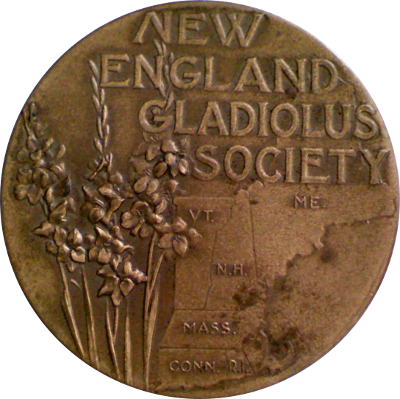
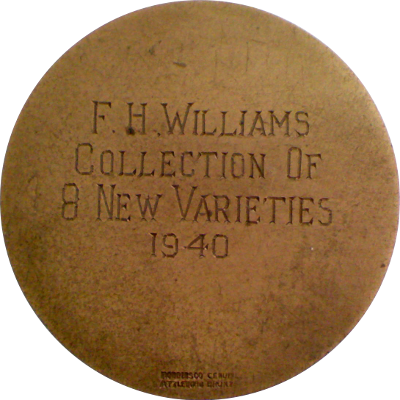
The obverse bears three iris stalks on left, a map of the New England states labeled VT, ME, N.H., MASS., CONN. and RI. on right. At top, NEW / ENGLAND / GLADIOLUS / SOCIETY
The reverse bears maker's mark ROBBINS CO. / ATTLEBORO - GENUINE / BRONZE. Inscription reading F. H. WILLIAMS / COLLECTION OF / NEW VARIETIES / 1940
The edge is unmarked.
The New England Gladiolus Society was created in 1920 when the Massachusetts Gladiolus Society changed its name to broaden its appeal to growers in all of New England. This date together with the dedication help us narrow down the medal's date, but not by much. Please contact me if you know the artist or the creation date.
The medal measures 51.3mm in diameter and was struck in bronze by the Robbins Company of Attleboro, Massachusetts.
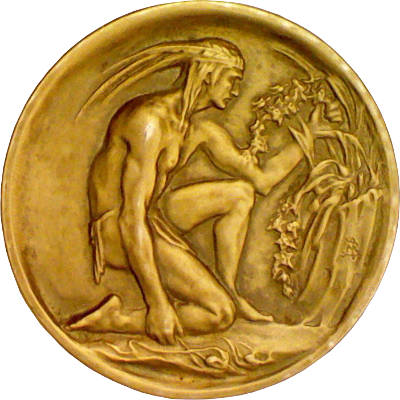
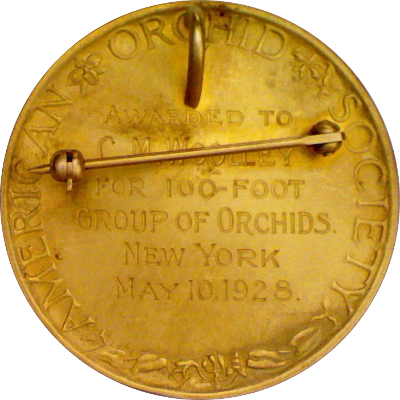
This medal's obverse bears kneeling Native American brave facing right, holding risp of orchids growing from raised ground on right. In ground at right, signed (BA monogram).
On the medal's reverse, around circumference, AMERICAN (flower) ORCHID (flower) SOCIETY; in center field, AWARDED TO / C. M. WOOLEY / FOR 100-FOOT / GROUP OF ORCHIDS. / NEW YORK / MAY 10, 1928.
The edge is marked with MEDALLIC ART CO. N.Y. 18Kt
This is a very feminine medal in which the Native American brave seems lost in contemplation while studying the risp of orchids. He seems totally relaxed with his right arm hanging at his side, the hand closed loosely around a length of string or plant fiber. The theme conveys both the native origin of the plants and the gentle nature of the hobby of orchid cultivation. We're leaving aside for the moment the fiercely competitive aspect of any organized club activity.
This beautiful medal was converted into a brooch or a pendant at some point in the past by soldering a clasp and a loop to its reverse. We can be grateful that the obverse was left alone and that the alterations appear to have been performed by a skilled jeweler.
The circular medal measures 41.4mm in diameter and was struck in 18Kt gold by the Medallic Art Company of New York.
References: Marqusee 9
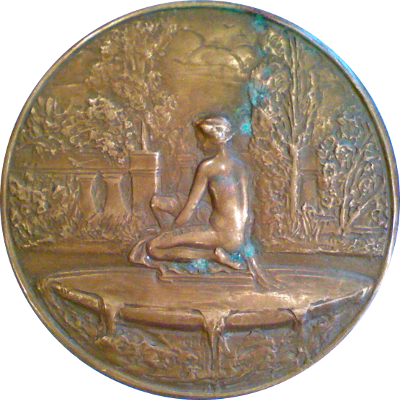
This uniface medal bears statue of kneeling female nude in center of fountain in the midst of an elaborate garden. (CLH monogram) in fountain's wall.
This medal is usually seen as a two-sided medal (MACo 1932-034) and probably represents a trial strike or a sample piece. Alternatively, the medal was struck one-sided to leave space for different engravings on the reverse. Clubs sometimes chose to have a batch of uniface medals struck that could then be used as awards or commemorative pieces, as needs arose.
The circular medal measures 76mm in diameter and was struck in bronze by the Medallic Art Company of New York. Its mintage is unknown.
References: MACo 1932-034
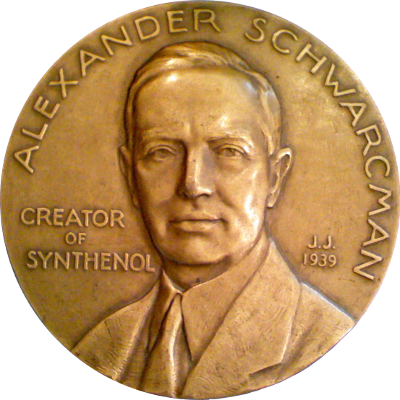
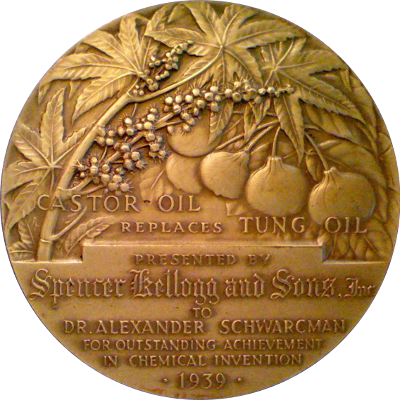
The medal's obverse bears bust of Alexander Schwarcman. Around top, ALEXANDER SCHWARCMAN; to left of bust, CREATOR / OF / SYNTHENOL; signed to right, J.J. / 1939
The medal's reverse bears branches of Tung trees with blossoms and nuts. Across image, CASTOR OIL / REPLACES TUNG OIL; in exergue, PRESENTED BY / Spencer Kellogg and Sons, Inc. / TO / DR. ALEXANDER SCHWARCMAN / FOR OUTSTANDING ACHIEVEMENT / IN CHEMICAL INVENTION / · 1939 ·
The edge is marked with MEDALLIC ART CO. N.Y. BRONZE
In the 1930s American industry was relying heavily on a chemical product called Tung Oil which was produced by pressing the nuts of Tung trees native to China. The war in Asia disrupted supplies and prices skyrocketed. Alexander Schwarcman developed an efficient and inexpensive way of replacing Tung Oil with Castor oil, which could be produced from seeds imported from Brazil, India, and Manchuria, i.e. countries from which bulk shipping was still possible. Not only did this have a profound economic impact but it also proved to be relevant for the war effort that was still in the future in 1939.
This is a beautiful medal and the botanical imagery on the reverse is of very high quality. It is also nice that an inventor whose name has otherwise been almost forgotten (and whose name is usually identified as a probable misspelling of "Schwartzman") is thus immortalized.
This medal measures 76mm in diameter and was struck in bronze by the Medallic Art Company of New York.
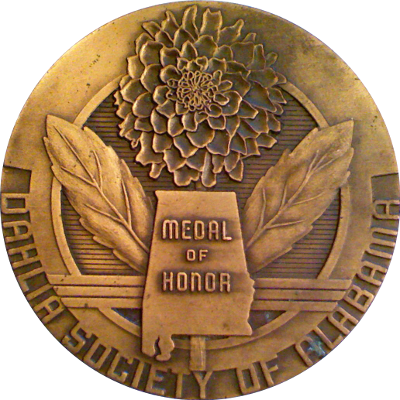
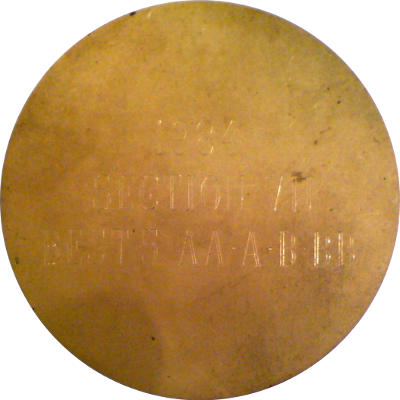
The obverse bears beautiful Art-Deco image of a Dahlia flower with two leaves, outline of State of Alabama over stem. Within state field, MEDAL / OF / HONOR; around bottom, DAHLIA SOCIETY OF ALABAMA
The reverse is blank with engraved inscription 1984 / SECTION VII / BEST 5 AA · A · B · BB
The design of this beautiful medal screams art -deco and the style is reminiscent of Rene Chambellan or Julian Harris, but I could not find any attribution for this medal. Any additional information about this medal would be very welcome.
This medal measures 76mm in diameter.
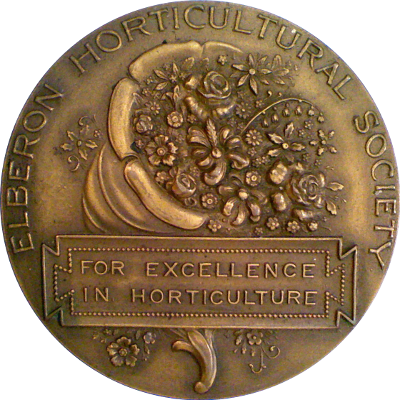
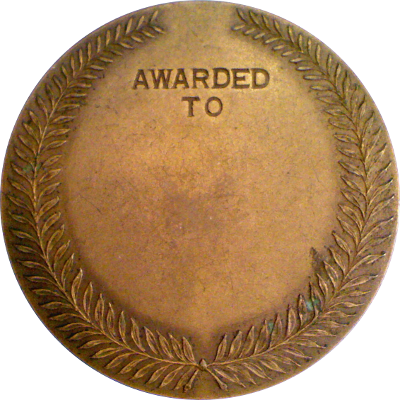
This medal's obverse bears a cornucopia of flowers. Around top, ELBERON HORTICULTURAL SOCIETY; panel across lower half reading FOR EXCELLENCE / IN HORTICULTURE
The reverse bears empty center field surrounded by wreath. At top, AWARDED / TO
The edge is marked MEDALLIC ART CO. N.Y. BRONZE
I don't know anything about this medal. Stylistically I would put it in the 1920-30s but I can't be sure and it is not signed. I would appreciate your assistance in identifying the artist and the medals year of creation.
The circular medal measures 51mm in diameter and was struck in bronze by the Medallic Art Company of New York.
Amy Angell Collier Montague Medal1950
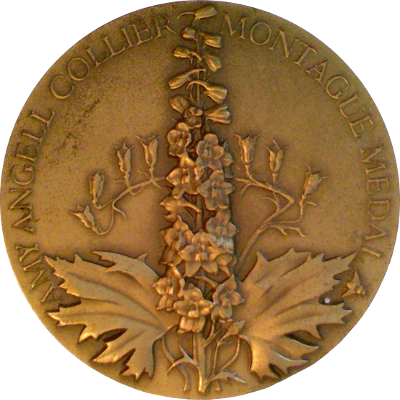

This medal's obverse bears hyacinth stem with two large leaves. Around, AMY ANGELL COLLIER MONTAGUE MEDAL; signed around lower right, G K LATHROP
The reverse bears flower in center panel, surrounded by four dolphins. Around, THE GARDEN CLUB OF AMERICA - · CIVIC ACHIEVEMENT AWARD · engraved to LOUISE BUSH-BROWN / 1955
The edge is marked MEDALLIC ART CO. N.Y. / BRONZE
The Garden Club of America was founded in 1913 to provide an umbrella for the many gardening organizations that were active at the time. Among many other activities, it awards several medals for achievement in different areas. The Amy Angell Collier Montague Medal is awarded for outstanding civic achievement. This particular piece was awarded in 1955 to Mrs. James Bush-Brown for originating the Garden Association of Philadelphia, starting with flower boxes for the flowerless in low rent housing areas.
With this medal Gertrude K. Lathrop demonstrated once again her marvelous skill at depicting plant and animal life in medallic form.
The circular medal measures 76mm in diameter and was struck in bronze by the Medallic Art Company of New York. No mintage is reported.
References: MACo 1950-015

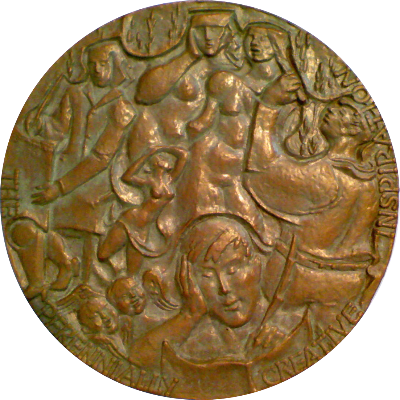
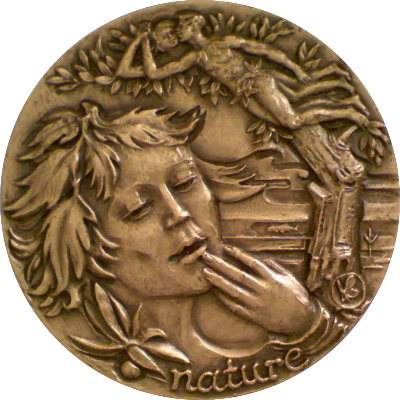
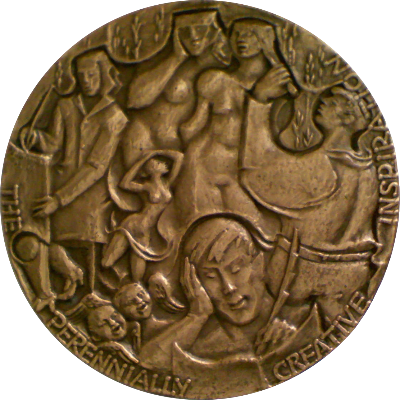
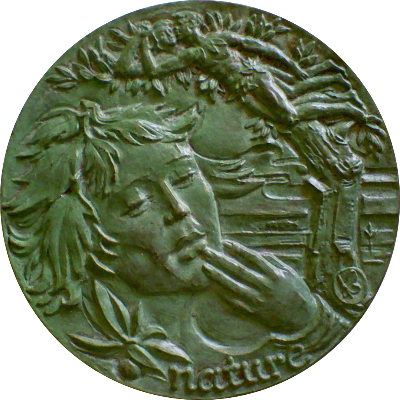
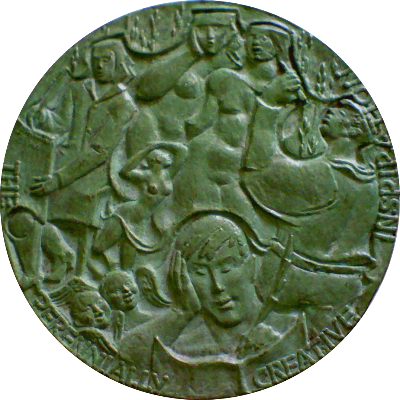
This medal was chosen as the 73rd issue of the prestigious Society of Medalists series in 1966.
The obverse bears dryad-like leaf-crowned nymph under tree into whose branches are worked man and woman. Script legend below, nature
The reverse bears figures writing, singing, dancing, painting and sculpting. Around, THE PERENNIALLY CREATIVE INSPIRATION; at left, Lohman / © 1965
Lohman is mostly known for abstract sculpture and this is one of his few medals. He wrote in the brief message accompanying the medal:
"To pay hommage to Nature for Her multitudinous contributions to mankind's intellect and perennial inspiration is intended in this medal."
The green patina on this medal, probably intended to reinforce the Nature theme, was not generally well received. While many members liked the design, few came out in support of the patina. Maybe that is the reason that pieces that were created at least a decade later with the Danbury mint mark were held in plain bronze. Another theory is that the process by which the thick green patina was applied had been lost due to the retirement of skilled technicians when operations were moved from New York to Connecticut.
This medal measures 73mm in diameter and was struck by the Medallic Art Company of New York. The reported production quantity of this medal is 807 in bronze.
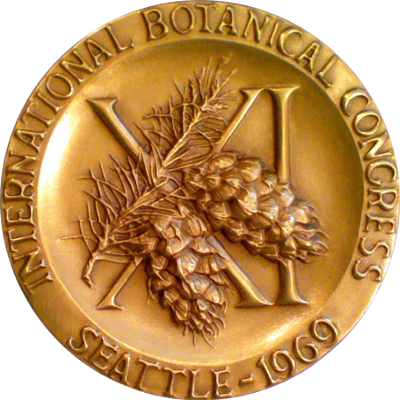
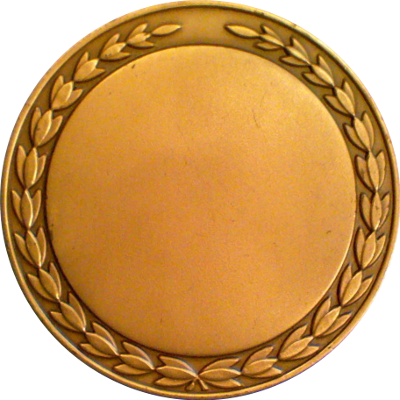
The obverse bears pine branch with two cones over large XI. Around, INTERNATIONAL BOTANICAL CONGRESS / SEATTLE ~ 1969
The reverse is blank except for a decorative wrerath running around the edge.
I finally identified this medal's artist with the help of Dick Johnson's excellent reference on American medallic art.
This medal was struck by the Medallic Art Company of New York.
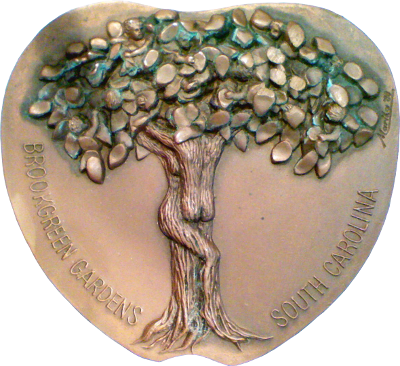
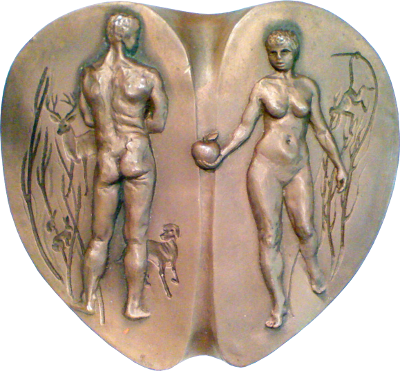
This was the 17th of the prestigious Brookgreen Gardens member medals, issued in 1989.
The obverse bears apple tree with male and female bodies cleverly worked into trunk. Along bottom left and right, BROOKGREEN GARDENS - SOUTH CAROLINA; signed near top at right, Marika '88.
The reverse bears nude male, back turned on left half, nude female facing, holding apple across divide; entire side styled as apple cut in half.
The medal's edge is marked MACO CU.
The apple-shaped medal measures 82mm x 75mm and was struck in copper by the Medallic Art Company.